
Roots
A quiet understanding often settles upon those who tend to their hair with intention, a recognition that its care transcends mere aesthetics. It reaches back through generations, a gentle whisper of traditions passed down, often rooted in practices so ancient they precede written record. For textured hair, this connection to ancestral wisdom holds particular weight.
The inquiry into the science behind ancient oil cleansing for hair invites us not merely to dissect molecular structures, but to consider the deep, almost intuitive knowledge held by our forebears. They observed, they experimented, and they perfected rituals that, unbeknownst to them in a scientific sense, aligned profoundly with the very chemistry of hair and scalp.
Long before the advent of synthetic compounds or sophisticated laboratory analyses, people discovered the remarkable properties of natural oils. These were not just emollients; they were agents of transformation, capable of purifying and nourishing simultaneously. The wisdom of these ancient practices often appears deceptively simple, yet their efficacy suggests a complex interplay of natural compounds and biological responses. We seek to peel back the layers of time, revealing the underlying scientific principles that gave these age-old methods their enduring power.

The Hair’s Intimate Structure
To truly appreciate the science behind ancient oil cleansing, one must first gain a deeper acquaintance with the hair strand itself. Each individual hair, seemingly delicate, is a complex biological marvel. It consists primarily of keratin, a fibrous protein. The outermost layer, the Cuticle, resembles overlapping scales, much like shingles on a roof.
This cuticle layer acts as a protective shield for the inner cortex, which provides strength and elasticity. For textured hair, these cuticle scales often lift more readily, contributing to its unique porosity and its propensity for moisture loss.
Below the cuticle lies the Cortex, a bundle of keratin fibers that give hair its bulk, strength, and color. At the very center of some hair types, a medulla can be found, though its exact function remains an area of ongoing scientific inquiry. The health and integrity of these layers dictate the hair’s appearance, its ability to retain moisture, and its resilience against environmental stressors. Any cleansing ritual, ancient or modern, must interact with these fundamental components without causing harm.

What is the Hair’s Natural Protective Layer?
Hair naturally produces a protective layer called Sebum, an oily, waxy substance secreted by the sebaceous glands located at the base of each hair follicle. Sebum serves several vital roles ❉ it lubricates the hair and scalp, helping to maintain suppleness and prevent dryness; it forms a hydrophobic barrier that repels water, reducing moisture loss; and it possesses mild antimicrobial properties, contributing to scalp health. However, sebum also attracts environmental pollutants, dust, and product buildup. An accumulation of these substances can weigh down hair, obscure its natural luster, and potentially create an environment conducive to microbial growth, leading to scalp irritation or other issues.
Ancient oil cleansing, at its core, leverages the principle of “like dissolves like.” Oils are non-polar substances, meaning they do not mix readily with water. Sebum, along with many common hair product ingredients, is also largely non-polar. When an oil is applied to the hair and scalp, it can effectively dissolve and lift away accumulated sebum, dirt, and product residue without stripping the hair of its essential moisture. This stands in contrast to harsh detergents, which often remove both beneficial and undesirable lipids, leaving hair feeling dry and brittle.
Ancient oil cleansing methods capitalize on the chemical principle of “like dissolves like” to gently purify hair and scalp.
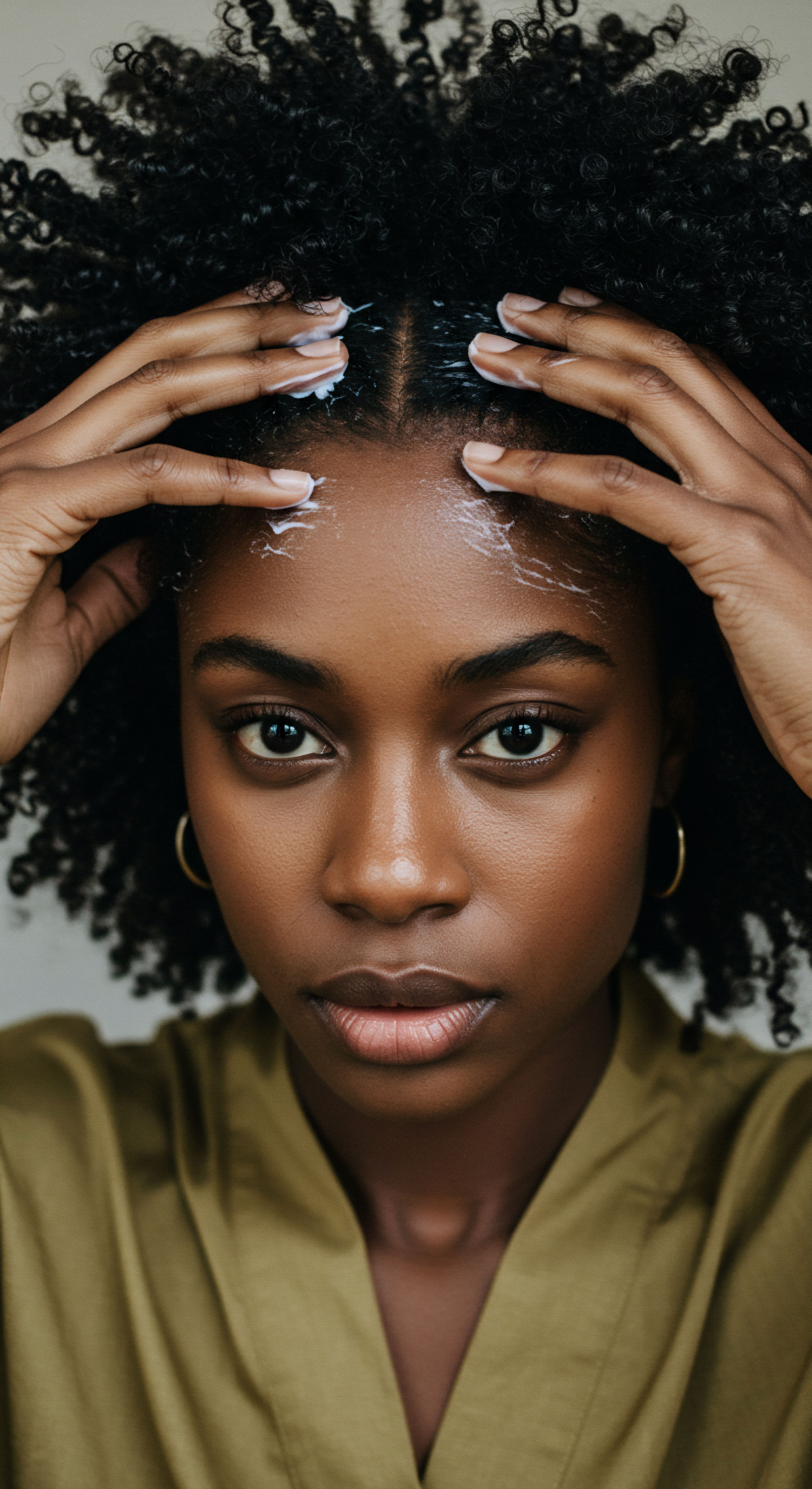
Understanding Hair Porosity and Its Impact
Hair porosity, a key characteristic particularly relevant for textured strands, describes the hair’s ability to absorb and retain moisture. It is determined by the condition of the cuticle layer.
- Low Porosity Hair ❉ This type has tightly bound cuticle scales, making it resistant to moisture absorption but also excellent at retaining it once absorbed. Oils may sit on the surface initially.
- Medium Porosity Hair ❉ The cuticle layers are less tightly bound, allowing for good moisture absorption and retention.
- High Porosity Hair ❉ Characterized by raised or damaged cuticle scales, this hair type readily absorbs moisture but struggles to retain it, leading to quick drying and a susceptibility to frizz. Oils can be particularly beneficial here, helping to seal the cuticle and reduce moisture loss.
Ancient oil cleansing, by its very nature, respects these varying porosity levels. The application of oils, especially when warmed gently, can help to soften and slightly lift the cuticle in low porosity hair, allowing for better penetration and cleansing. For high porosity hair, the oil acts as a sealant, preventing excessive water absorption during the rinsing process and minimizing the leaching of vital lipids. This nuanced interaction underscores the sophisticated, albeit intuitive, understanding embedded within these historical practices.
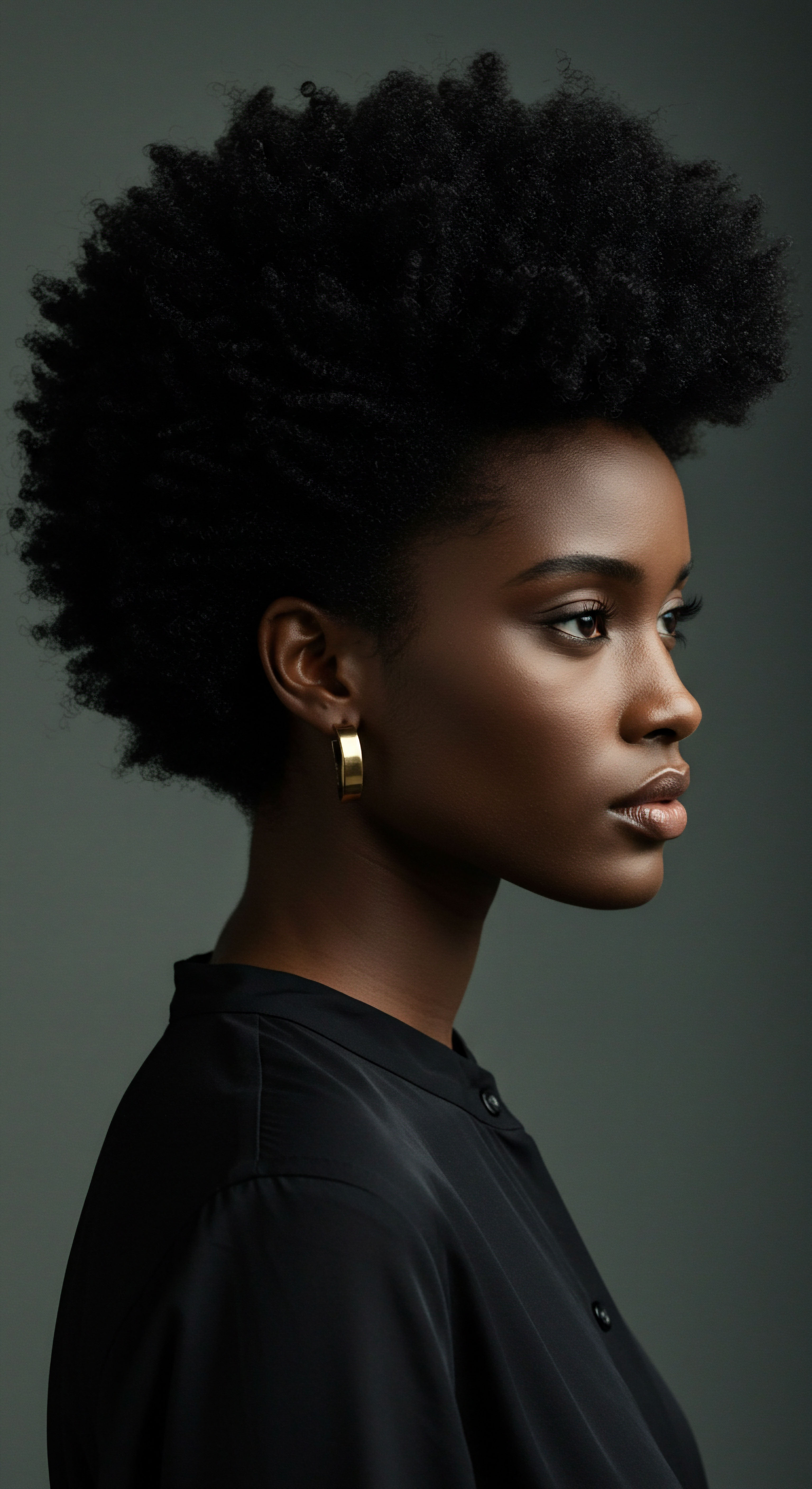
Ritual
The transition from foundational knowledge to the application of wisdom marks a profound shift. Our daily or periodic practices shape not only the physical state of our hair but also our connection to self. Ancient oil cleansing, far from being a mere technique, often constituted a ritual, a deliberate act of care and attention.
These practices were often steeped in cultural significance, passed down through oral traditions, and refined over countless generations. The efficacy of these rituals lay not just in the ingredients used, but in the methodical application and the inherent understanding of the hair’s needs.
The gentle guidance offered by these time-honored methods provides a powerful alternative to modern approaches that sometimes prioritize speed over sensitivity. We find ourselves drawn to the purposeful movements, the patient waiting, and the holistic impact that extends beyond the visible strand. This section explores the practical science behind these ancient rituals, dissecting the steps and revealing how each action contributes to the hair’s overall health and vitality.
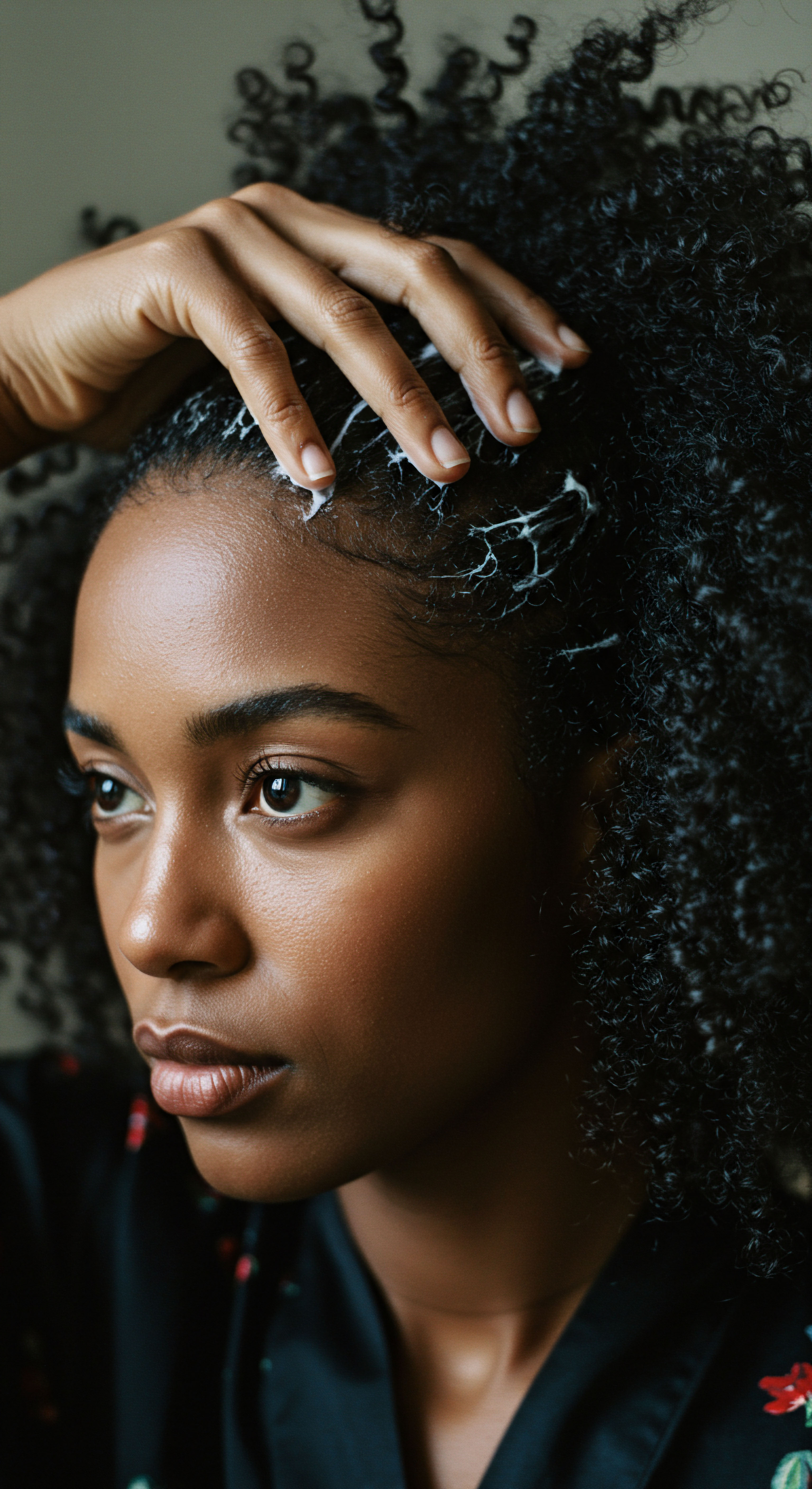
The Oil Cleansing Process A Scientific Overview
At its heart, ancient oil cleansing involves saturating the hair and scalp with a natural oil, allowing it to sit, and then rinsing it away, often with water or a mild, natural rinse. This process appears simple, yet the scientific mechanisms at play are remarkably effective.
When oil is applied, particularly to the scalp, it acts as a solvent for sebum, dirt, and product buildup. The non-polar nature of the oil allows it to mix with and loosen these hydrophobic impurities. Think of it as a gentle magnetic attraction; the oil molecules draw out the grime without stripping the scalp’s natural lipid barrier. This is a significant distinction from harsh surfactants, which can disrupt the skin’s delicate microbiome and lead to dryness or irritation.
Beyond the cleansing action, the oil simultaneously conditions the hair. The lipids in the oil can penetrate the hair shaft, especially if the hair is porous or if the oil is applied with gentle heat. This penetration helps to plump the hair shaft, reducing breakage and improving elasticity. For textured hair, which often has a more irregular cuticle layer, this lipid infusion can help to smooth the cuticle, reducing frizz and enhancing shine.

How does Oil Effectively Cleanse without Stripping?
The principle at play here is solubility. Most of the unwanted substances on our hair and scalp – excess sebum, styling product residues (many of which are oil-based or contain silicones), and environmental pollutants – are lipophilic, meaning they are “fat-loving” or soluble in fats and oils. Water alone struggles to remove these substances effectively because water is a polar molecule and oil is non-polar; they repel each other.
When a natural oil is applied, its non-polar molecules readily interact with and dissolve these lipophilic impurities. This allows the oil to lift them from the hair and scalp.
Consider the historical use of olive oil in ancient Mediterranean cultures for both body and hair cleansing. Archaeological evidence suggests that olive oil, sometimes combined with ash or clay, was used as a precursor to soap. The oil would be massaged onto the skin and hair, collecting impurities, and then scraped off, often with a strigil, before a final rinse.
This mechanical removal, combined with the oil’s solvent action, provided effective cleansing without the harshness of modern detergents. This method respected the skin’s natural lipid barrier, maintaining its integrity.
| Aspect Primary Cleansing Mechanism |
| Oil Cleansing "Like dissolves like" (lipid-based solvent action) |
| Traditional Shampooing Surfactant action (emulsification) |
| Aspect Impact on Natural Lipids |
| Oil Cleansing Preserves natural sebum, adds beneficial lipids |
| Traditional Shampooing Can strip natural sebum, potentially leading to dryness |
| Aspect Scalp Environment |
| Oil Cleansing Supports scalp microbiome balance |
| Traditional Shampooing May disrupt scalp microbiome, leading to irritation |
| Aspect Hair Moisture Retention |
| Oil Cleansing Enhances moisture retention by sealing cuticle |
| Traditional Shampooing Can reduce moisture retention, especially with harsh sulfates |
| Aspect Hair Texture Post-Wash |
| Oil Cleansing Soft, supple, less prone to tangles |
| Traditional Shampooing Can feel "squeaky clean," sometimes dry or brittle |

Selecting Oils for Textured Hair Cleansing
Not all oils are created equal when it comes to hair cleansing and care. The choice of oil in ancient traditions was often dictated by local availability and empirical observation of their effects. Scientifically, different oils possess varying molecular weights, fatty acid profiles, and penetration capabilities.
- Coconut Oil ❉ Rich in lauric acid, a medium-chain fatty acid with a small molecular structure, allowing it to penetrate the hair shaft more deeply than many other oils. This makes it effective for reducing protein loss during washing and providing internal conditioning.
- Olive Oil ❉ A heavier oil, rich in oleic acid, which coats the hair shaft, providing excellent external conditioning and helping to smooth the cuticle. It is particularly good for detangling and adding shine.
- Jojoba Oil ❉ Technically a wax ester, it closely mimics the structure of natural human sebum, making it highly compatible with the scalp’s natural chemistry. This oil is excellent for balancing scalp oil production and dissolving excess sebum without clogging pores.
The ritualistic application often involved warming the oil gently, which enhances its fluidity and allows for better spread and penetration. A thorough massage of the scalp also stimulates blood circulation, which supports follicle health, and aids in loosening debris. The final step, rinsing, might involve warm water or a diluted acidic rinse (like apple cider vinegar) to help close the cuticle and remove excess oil, leaving the hair clean yet conditioned.
The choice of oil in ancient hair cleansing rituals was not arbitrary, but rather aligned with specific lipid profiles that offer distinct benefits to hair and scalp.

Relay
To truly comprehend the enduring power of ancient oil cleansing for hair, we must move beyond simple descriptions and delve into a more profound, multi-dimensional exploration. This involves an intricate interplay of biological realities, cultural continuities, and the subtle yet powerful influence of historical wisdom. The efficacy of these practices is not merely anecdotal; it is increasingly affirmed by contemporary scientific inquiry, bridging the chasm between ancestral knowledge and modern understanding. We are invited to consider how deep cultural intelligence, often unwritten, informed highly effective personal care regimens, particularly for hair with unique structural demands.
The science behind ancient oil cleansing for textured hair, in particular, speaks to a sophisticated adaptive response. These methods addressed the specific challenges of coily, kinky, and curly strands – their tendency towards dryness, their delicate structure, and their unique porosity – long before these terms entered scientific lexicon. We find a compelling convergence of tradition and empirical evidence, a relay of wisdom across generations that continues to resonate with contemporary hair care philosophies.

The Biomechanics of Oil and Hair Fiber
The interaction between oils and the hair fiber is a fascinating area of study. Hair, particularly textured hair, possesses a complex geometry. The helical structure of curly and coily hair means that sebum, produced at the scalp, struggles to travel down the entire length of the hair shaft.
This leads to drier ends and a greater susceptibility to breakage. Ancient oil cleansing, by distributing beneficial lipids throughout the hair, directly addresses this challenge.
When oils penetrate the hair, they can reduce the Coefficient of Friction between individual hair strands. This means less friction during styling and detangling, which translates directly to less mechanical damage and breakage. A study published in the Journal of Cosmetic Science, for instance, demonstrated that certain oils, like coconut oil, significantly reduced protein loss from hair during washing and grooming.
This is particularly relevant for textured hair, which is inherently more fragile at points of curvature. The lipid barrier created by the oil also helps to prevent excessive water absorption, which can cause hygral fatigue – the repeated swelling and shrinking of the hair shaft that weakens its structure over time.
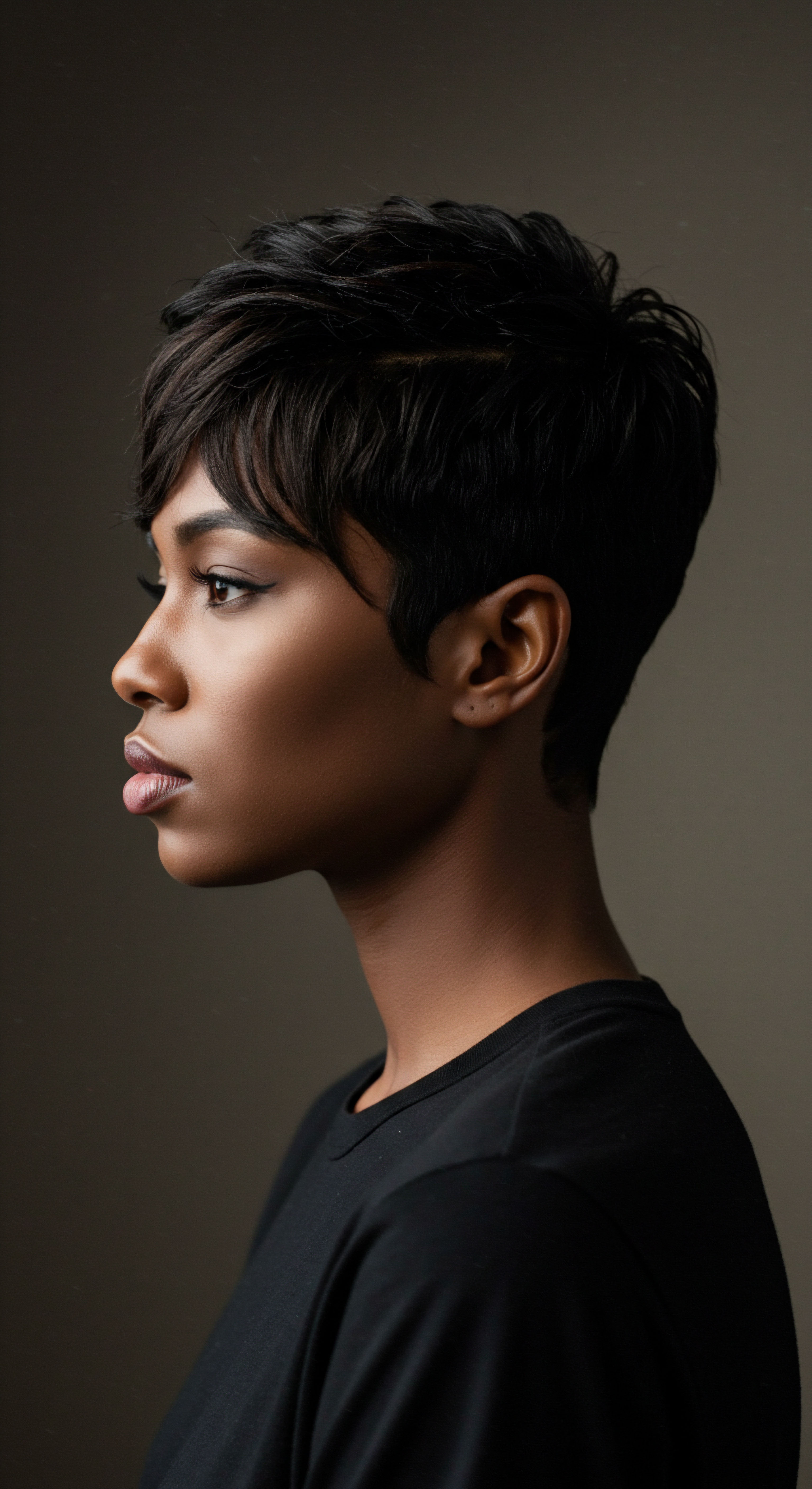
What Role do Lipids Play in Preventing Hair Protein Loss?
Lipids, such as those found in natural oils, play a significant role in preventing hair protein loss by forming a protective layer on the hair surface and, in some cases, penetrating the hair shaft. Hair is primarily composed of keratin proteins. When hair is wet, especially during washing with harsh detergents, the hair fiber swells, and the cuticle scales lift.
This makes the hair more vulnerable to protein loss, as the internal protein structures can leach out. Oils, particularly those rich in saturated fatty acids like coconut oil’s lauric acid, have a high affinity for hair proteins.
The smaller molecular size of lauric acid allows it to permeate the hair shaft, binding to the keratin proteins within the cortex. This internal binding helps to reinforce the hair’s structure and reduces the amount of water absorbed into the fiber, thereby mitigating the swelling and subsequent protein loss during washing. For example, a 2003 study on the effect of mineral oil, sunflower oil, and coconut oil on hair found that coconut oil was the only one that reduced protein loss for both damaged and undamaged hair when used as a pre-wash treatment.
This scientific backing provides a compelling explanation for the efficacy of ancient practices that favored coconut oil in regions where it was abundant. The external film formed by other oils, while not penetrating as deeply, still acts as a barrier, minimizing friction and protecting the cuticle from mechanical abrasion and chemical stressors.

The Scalp Microbiome and Oil Cleansing
The human scalp hosts a complex ecosystem of microorganisms, collectively known as the scalp microbiome. A balanced microbiome is essential for scalp health, contributing to its barrier function and defending against pathogenic invaders. Harsh cleansing agents can disrupt this delicate balance, leading to issues such as dryness, irritation, or even conditions like dandruff.
Ancient oil cleansing methods, by their very nature, are far gentler on the scalp microbiome. Instead of stripping away all lipids, they work to dissolve excess sebum and debris while leaving beneficial commensal organisms undisturbed. Some oils, like tea tree oil (often used in diluted forms in traditional blends for its antimicrobial properties), can selectively target undesirable microbes without causing widespread disruption.
The application of nourishing oils can also provide a healthy lipid environment for the scalp’s natural flora, promoting a balanced ecosystem. This approach stands in stark contrast to the modern overuse of strong antimicrobial shampoos that can inadvertently harm the beneficial bacteria and fungi essential for a healthy scalp.
Ancient oil cleansing respects the delicate balance of the scalp’s microbial ecosystem, fostering health rather than disrupting it.

Cultural Continuity and Scientific Validation
Across diverse cultures, from ancient Egypt to traditional Indian Ayurvedic practices, oil cleansing for hair and skin was a cornerstone of personal hygiene and beauty. In Ayurvedic texts, the practice of Shiro Abhyanga, a head massage with warm herbal oils, is described not only for its cleansing and conditioning properties but also for its calming effects on the nervous system. The oils used were often infused with herbs chosen for specific therapeutic benefits, such as brahmi for hair growth or neem for its antiseptic qualities.
This historical continuity suggests a deep, experiential understanding of oil’s benefits. The scientific validation we seek today merely provides the language to describe what was known through generations of observation and practice. The traditional methods, refined over millennia, implicitly accounted for factors like hair porosity, scalp microbiome health, and the structural integrity of the hair fiber.
The modern challenge lies in re-integrating this holistic wisdom with contemporary scientific insights, allowing us to move beyond superficial cleansing to truly restorative and respectful hair care. The relay of this knowledge, from ancient wisdom keepers to modern scientific inquiry, reveals a profound, interconnected understanding of hair’s intrinsic needs.
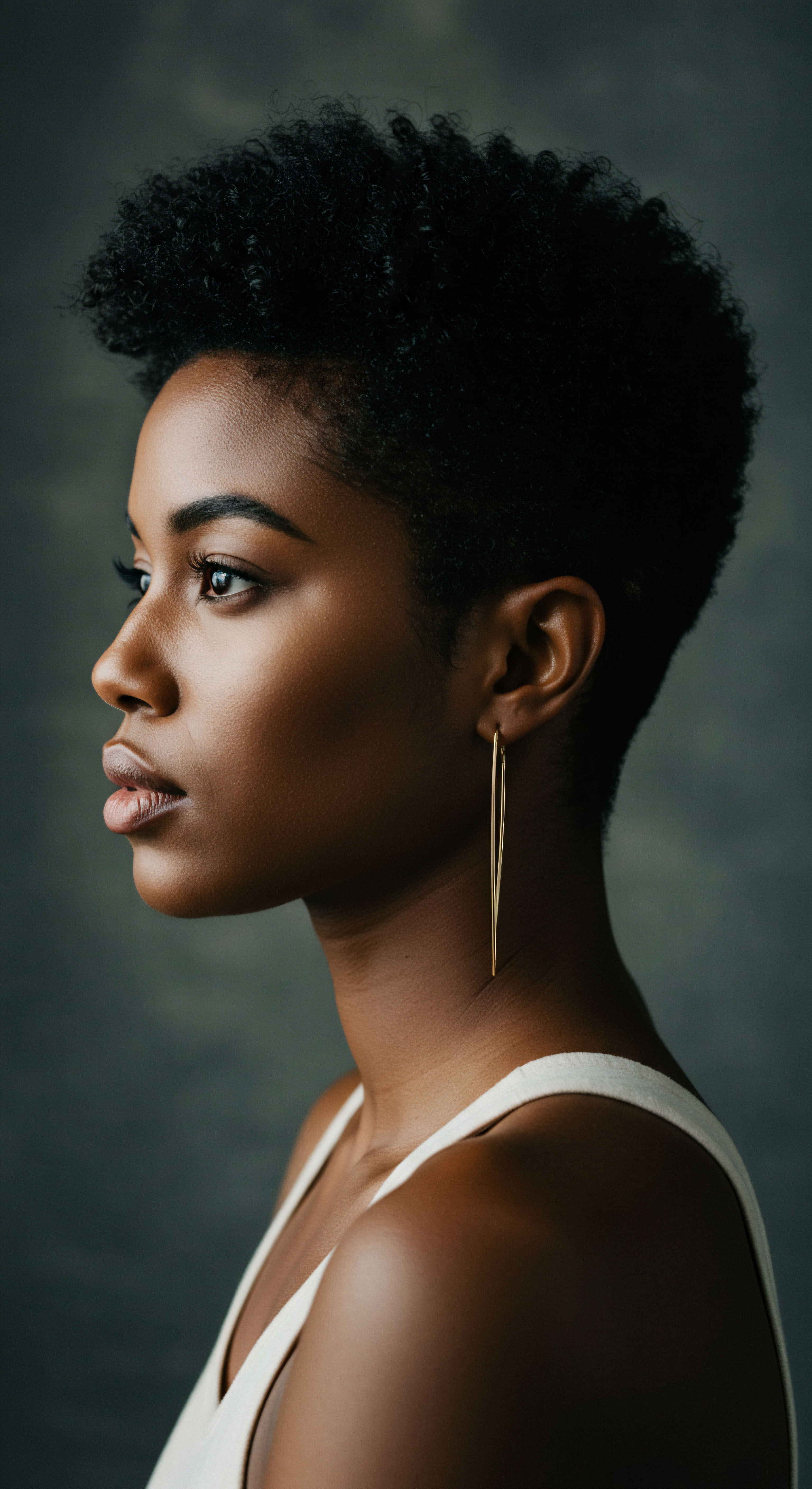
Reflection
Our journey through the science behind ancient oil cleansing for hair ultimately leads us to a quiet realization ❉ the wisdom of the past, often dismissed as mere folk remedies, holds profound scientific truths. The gentle hand of tradition, guided by keen observation and patient refinement, discovered principles that modern chemistry and biology are only now articulating with precision. For textured hair, this connection to ancestral practices offers more than just effective care; it provides a pathway to celebrating inherent beauty, to understanding the unique language of our strands, and to reclaiming a sense of grounded connection in a world that often prioritizes speed over thoughtful ritual. Perhaps the most significant lesson lies not just in what oils do, but in the mindful approach they inspire, a delicate dance between ancient knowing and contemporary discovery.

References
- 1. Sherrow, Victoria. “Encyclopedia of Hair ❉ A Cultural History.” Greenwood Publishing Group, 2006.
- 2. Rele, J. S. and R. B. Mohile. “Effect of mineral oil, sunflower oil, and coconut oil on prevention of hair damage.” Journal of Cosmetic Science, vol. 54, no. 2, 2003, pp. 175-192.
- 3. Rele, J. S. and R. B. Mohile. “Effect of mineral oil, sunflower oil, and coconut oil on prevention of hair damage.” Journal of Cosmetic Science, vol. 54, no. 2, 2003, pp. 175-192.
- 4. Draelos, Zoe Diana. “Cosmetic Dermatology ❉ Products and Procedures.” Wiley-Blackwell, 2010.
- 5. Dawber, Rodney, and Anthony Messenger. “Diseases of the Hair and Scalp.” 3rd ed. Blackwell Science, 1997.
- 6. Lad, Vasant. “Ayurveda ❉ The Science of Self-Healing.” Lotus Press, 1984.
- 7. Wolfram, Leszek J. “Human Hair ❉ A Unique Physicochemical Composite.” Journal of the American Academy of Dermatology, vol. 48, no. 5, 2003, pp. S106-S114.
- 8. Robbins, Clarence R. “Chemical and Physical Behavior of Human Hair.” 5th ed. Springer, 2012.
- 9. Wilkes, L. C. “Hair and Scalp Diseases.” Churchill Livingstone, 2001.
- 10. Kumar, Sanjeev, and V. K. Sharma. “Herbal Medicine ❉ Indian System of Medicine (Ayurveda).” Daya Publishing House, 2005.